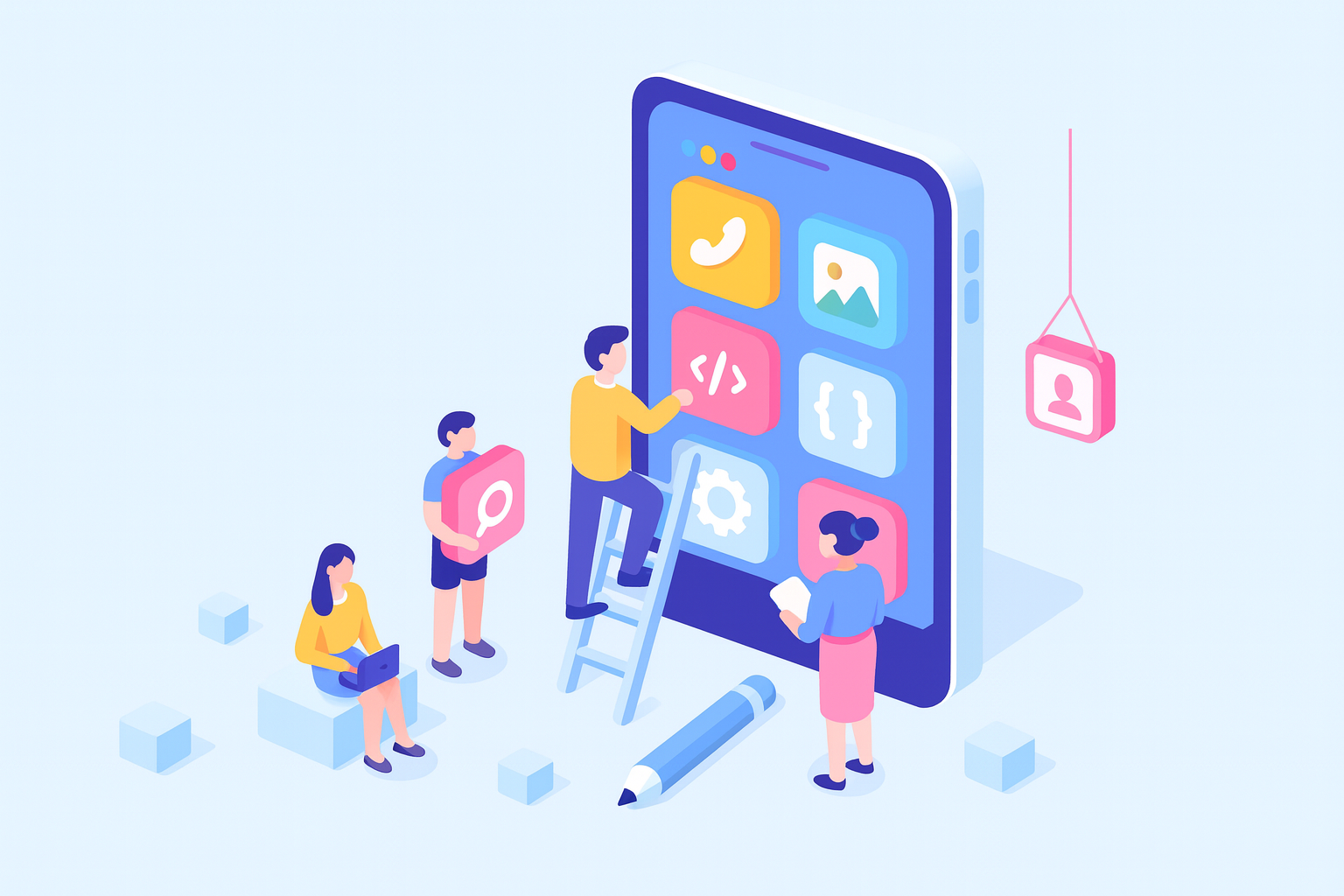Summary: Mobile banking app development has rapidly become one of the most serious potential problems in fintech. Millions of users rely on their mobile devices for financial transactions; therefore, writing secure and scalable apps is not only appropriate but imperative. This guide walks developers and tech professionals through the technical and architectural steps needed to create high-performing banking apps. From backend choices and compliance strategies to choosing the right mobile application development company or app developers for hire, this article brings clarity to a complex challenge. Let’s break down the essentials of doing it right.
Introduction
Building a mobile banking app is not the same as writing a to-do list or ride-share app. Data protection, compliance, and uptime are foundational; it is not optional, as it is central to trust from users, compliance, or regulation.
A poorly secured app can be exploited in hours, while a slow app won’t survive market expectations. If you’re a developer or part of a mobile application development company aiming to get into fintech, knowing how to build for security and scale from the ground up is critical.
This guide will unpack that process in practical, deeply technical terms, without drowning you in theory.
The Core Architecture of a Mobile Banking App
Architecture is everything – for security, performance, and scale. Here is how the architecture should look under the hood:
1. Client Layer
To be written in Swift for iOS or Kotlin for Android, or cross-platform with either Flutter or React Native; this layer should NEVER store sensitive data locally and be entirely based on secure token management for user sessions.
2. API Gateway
A layer that serves as the entry/exit point for the application. It is responsible for throttling, authentication, and input validation. Popular tools are Kong or AWS API Gateway
3. Backend Services
Move towards splitting services by logical unit of functionality, like auth, transaction processing, user profile, and analytics, so that they are independently scalable and the failure of any of the units does not impact the units of criticality.
4. Database Layer
For logs and sessions, use a combination of relational databases and NoSQL databases. Ensure encryption-at-rest and encryption-in-transit are always in use.
5. Third-Party Integrations
Payment gateways, credit bureaus, fraud-detection service APIs, and KYC service. Each service should be functionally isolated, and the details should not be expected to leak across units. Each service will need monitoring and resilience in place.
Security by Design: Building for Defense, Not Recovery
Security in mobile banking app development needs to be proactive, not reactive. Here’s how to embed it from the first commit:
- End-to-End Encryption
Regardless of whether the channel is a browser, native, or hybrid mobile application, data traffic should be encrypted by TLS 1.3 or a version lower supported.
Credentials stored locally on-device upon registration, at a minimum, require that credentials are stored encrypted using a secure hardware-backed key store.
- Multi-Factor Authentication
Always have a biometric or device-based 2FA capability. At a minimum, discourage SMS methods as they are vulnerable to SIM swap.
- Real-Time Threat Detection
Use threats such as Firebase App Check or some runtime-integrated app self-protection to see if the code has been tampered with or in a root or jailbreak environment.
- Role-based Access Control
Monitor user roles and limit access based on session duration on both the front end and back end. Use scoped tokens with expiration dates.
- Compliance-First Design
Always design with compliance with GDPR – Europe, PCI-DSS – Global, RBI & UPI regulations – India, and CCPA – California as your first approach.
Each of these regions has a different compliance model, which will affect the way data is handled, as well as how auditors and user rights are affected.
Scaling The Infrastructure Without Breaking the Bank
Outages, which really have the potential to cost you money, are something you want to avoid at all costs. Here are some suggestions to avoid outages while still keeping things light and scalable:
- Cloud-native services
Yes. We use a cloud service provider to offload and delegate the headaches and operational overhead of their managed services for common workloads.
Lessons Learned from using cloud-native services, you should explore and see how you can utilize Load balancer services and an auto-scaling group to be flexible, and manage Kubernetes clusters.
The service benefits can far exceed the infrastructure costs you’ll have to tackle on your own.
- Database scaling
With a finite amount of resources, direct “vertical scaling” only takes you so far. Leverage read replicas, vertical scaling, sharding, partitioning, etc., to provide scalable data access with the possibility of various users, and potentially millions of user records, without the platform becoming a bottleneck.
- Containers and orchestration
Dockerize every microservice. Use Kubernetes for orchestration – alternatives include ECS or Nomad.
The Horizontal Pod Autoscaler lets you automatically scale your services during peak transaction periods, dynamically.
- Load balancing and caching
Use CDN-backed load balancers, caching systems like Redis or Memcached for frequently accessed data, e.g., FX rates, profile data, dashboard summary data, etc.
- Monitoring & observability
You can either use Prometheus + Grafana or New Relic to be notified and aware of latency, CPU usage, request volume, etc., in almost real time.
Make sure that whatever UPM service you use includes some service so you can actually “monitor” the operation of the UPM service.
Select The Right Development Team or Partner
No matter whether you are going to build it in-house or hire it out, the quality of the people involved is critical. If you are going to hire app developers, these are the things worth spending time assessing:
- Fintech Background
You’ll want to ensure they have the ability to understand the problem domain as it relates to financial APIs, digital KYC, fraud patterns, compliance workflows, etc.
Having relevant domain knowledge helps take away the friction period of bringing the team on board and minimizes the chance of making mistakes in the workflow.
- Security Awareness
You want to hire app developers who write clean, testable, and auditable code. Ask for their experience mitigating the OWASP Top 10 and doing reviews for secure code.
- Full-Stack Knowledge
There is an advantage to specialization, but if you are able to find app developers with cross-functional knowledge, imagine how much architectural and trade-off conversation you can have early in the development process.
- Experience with Mobile App Development Services
If you hire a mobile application development company, you should evaluate their portfolio for success with complex fintech products, integrations, and post-deployment product cycles.
- Strong Communication Skills and Documentation
Developing a banking app is not a sprint. Select developers who document their code and can provide reasons for their decisions. This will make hand-offs, audits, and upscaling easier.
Testing, Deployment, and Post-Launch Best Practices
Ship fast, but test harder. In mobile banking, a crash is more than a but it’s a potential trust-breaker.
Testing Strategy:
- Unit Testing
You want to ensure you test your core business logic to make certain it has the intended functionality, especially when it comes to funds and identity.
- Penetration Testing
You should be performing penetration testing, using manual tests and tools like OWASP ZAP or Burp Suite, you identify a variety of attack surface vulnerabilities.
- Regression Testing
If there has been a change, always perform regression tests so you are sure you haven’t accidentally broken a previously functioning flow.
- Load Testing
If you want to load test, you can do this with JMeter or Locust to simulate a high number of users performing the same transaction concurrently.
- Deployment Pipelines
Always use a CI/CD deployment pipeline, ideally with version tagging, rollback, and manual approvals before deploying. For example, GitHub Actions, CircleCI, and GitLab CI all have applicable scenarios here.
- App Store Optimization:
Don’t forget you can also optimize your launch as much as possible, including metadata, app ratings, and the fact that you are completely committed to any hotfix updates that need to happen, or for crash analytics.
- User Support & Feedback Loops
Use in-app feedback and support loops. When users come in early, they are usually mumbling about things that escape QA, and you should usually listen at this stage.
Final Take
When building a secure and scalable mobile banking application, it is not about following the fads in software development, but mastering the fundamentals and honouring the cumbersome complexity, irrespective of whether you are an independent developer or a mobile application development company.
The ability to balance tight security and seamless scalability is your competitive advantage, with everything starting from hiring the right app developers, through to implementing cloud-native architecture and solid security protocols.
Every decision you make will directly impact the stability of your product. Building for the future not only means building an app but also building trust for your clients.








